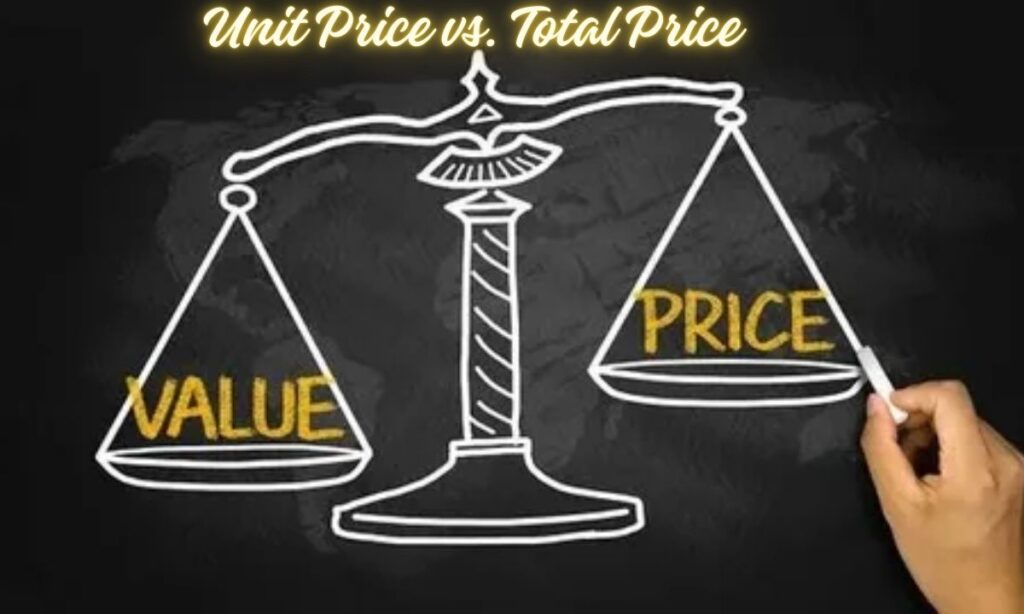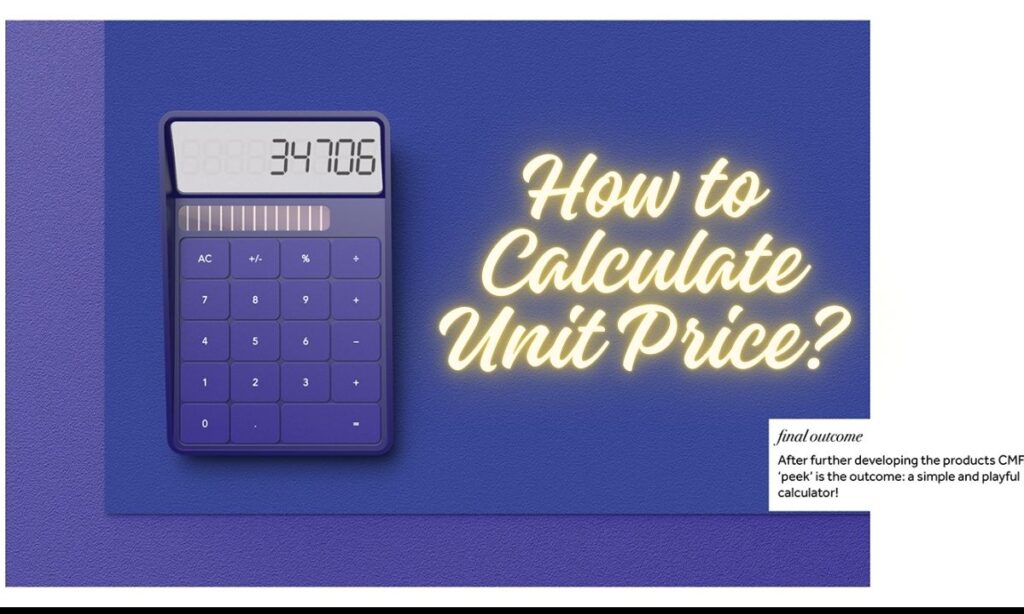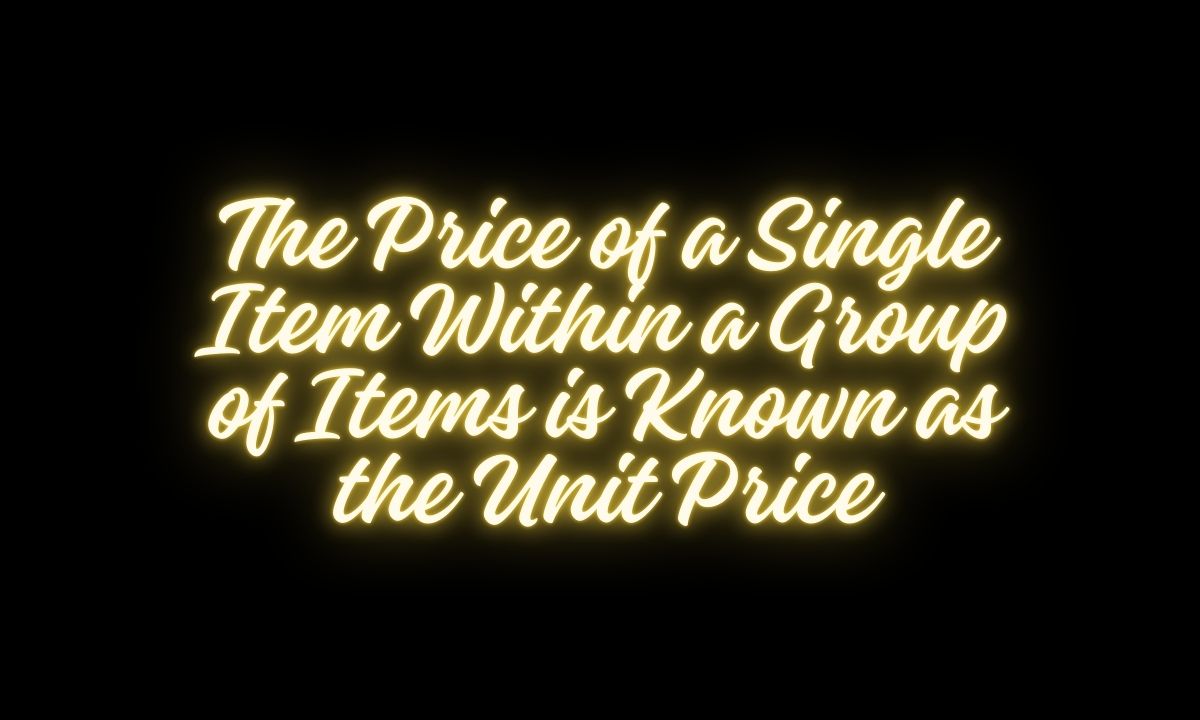The unit price represents the exact cost of one item when purchased as part of a larger group or bulk quantity.
This fundamental pricing concept helps shoppers understand the true individual cost of products, regardless of package size or quantity offered.
Whether comparing groceries, household items, or bulk purchases, knowing the price per unit empowers consumers to make informed decisions and identify the best value for their money.
What Is Unit Price?
Unit price represents the cost of a single item when purchasing multiple items together. This price calculation method enables consumers to compare different package sizes and brands effectively.
When shopping for groceries, household items, or bulk purchases, knowing the price per unit helps determine the best value for money.
The unit price calculation considers the total cost divided by the quantity of items, providing a clear measure of value.
How Unit Price Helps in Making Smarter Decisions?
Making informed purchasing decisions requires understanding how cost comparison affects your shopping choices. Unit pricing allows shoppers to evaluate different package sizes, brands, and bulk options effectively.

When comparing products, the price per unit provides a standardized way to assess value across different quantities and packaging sizes. Smart shoppers use unit pricing to avoid marketing tricks and ensure they get the best possible deal.
Why Unit Price Is Important for Budgeting?
Effective budgeting relies heavily on understanding the true cost of items we purchase. Unit pricing helps create accurate shopping lists and monthly budgets by providing clear insights into the actual cost per item.
When planning household expenses, knowing the individual cost of products helps predict future spending and identify potential savings. Budget-conscious shoppers can make better financial decisions by tracking unit prices over time.
Understanding Price Calculations
The process of determining unit prices involves more than simple division. Price calculations must consider various factors such as package size, weight, volume, and quantity.
Modern retailers often provide unit pricing information on shelf labels, but understanding how to perform these calculations independently remains crucial.
Smart shoppers regularly practice calculating unit prices to develop quick comparison skills while shopping.
Daily Applications of Unit Pricing
Unit pricing applies to countless daily situations beyond grocery shopping. From office supplies to personal care items, understanding the price per unit helps in every purchase decision.
Professional procurement teams use unit pricing to manage large-scale purchases effectively. Small business owners rely on unit price comparisons to maintain profitable inventory management systems.
Consumer Psychology and Unit Pricing
The psychology behind unit pricing influences how consumers perceive value. Marketing strategies often attempt to obscure unit prices through complex packaging and pricing schemes.
Understanding this psychology helps shoppers resist impulse purchases based on misleading promotional offers. Smart consumers develop habits of checking unit prices regardless of package presentation or marketing tactics.
Digital Tools and Unit Price Comparison
| Tool Type | Primary Features | Best Used For | Price Comparison Method |
| Shopping Apps | Built-in calculators, Barcode scanning | Regular grocery shopping, In-store comparison | Automatic unit price calculation |
| Price Comparison Websites | Multi-store comparison, Price alerts | Online shopping, Bulk purchases | Side-by-side retailer comparison |
| Browser Extensions | Automatic price checking, Price history graphs | Online marketplace shopping | Real-time price monitoring |
| Smart Shopping Lists | Unit price tracking, Budget planning | Regular household purchases | Automated price per unit tracking |
| Digital Wallets | Receipt scanning, Purchase history | Budget tracking, Expense monitoring | Historical unit price analysis |
| Price Scanner Apps | Barcode scanning, Local store comparison | In-store price verification | Manual unit price input |
| Budgeting Apps | Expense categorization, Price tracking | Long-term price monitoring | Expense-based unit pricing |
| Smart Home Assistants | Voice-activated price checks, Shopping list management | Quick price verification | Voice-based price comparison |
| Inventory Management Apps | Stock tracking, Price monitoring | Bulk buying, Storage management | Volume-based unit pricing |
Unit Price vs. Total Price: Why Does It Matters?
The difference between unit price and total price significantly impacts purchasing decisions. While the total price shows the immediate cost, the unit price reveals the true value of each item within a group.

Understanding this distinction helps shoppers avoid misleading bulk deals and promotional offers. Comparing unit prices across different package sizes ensures you’re getting the best value regardless of the total price.
How Unit Price Affects Bulk Purchases?
Bulk purchase decisions should always consider unit pricing to ensure genuine savings. Sometimes, larger quantities don’t automatically mean better value, making unit price calculations essential.
Understanding how unit pricing works in bulk buying situations helps avoid unnecessary purchases and storage costs. Smart shoppers compare unit prices across different package sizes before committing to bulk purchases.
Understanding Unit Price with Different Product Categories
Different product categories require unique approaches to unit price comparison. Grocery items might be measured per ounce or pound, while household goods might be priced per unit or piece.
READ THIS BLOG: Understanding “Sources Victor Jacobsson Ipotimes”: A Guide to Reliable Information
Electronic items often require considering features and specifications alongside the unit price. Understanding these variations helps make better purchasing decisions across different product categories.
How to Calculate Unit Price?
Calculating unit price involves dividing the total cost by the number of items or units of measure. This simple price calculation helps shoppers compare prices across different brands and package sizes.

Understanding how to quickly calculate unit prices while shopping improves decision-making and saves money. Modern shopping apps and store labels often display unit prices to help consumers make quick comparisons.
How to Use Unit Price to Maximize Value?
Maximizing value through unit pricing requires consistent attention to price comparisons and market trends. Regular monitoring of unit prices helps identify genuine sales and discounts.
Understanding seasonal price fluctuations and storage capabilities helps make informed bulk purchasing decisions.
Smart shoppers use unit pricing to stock up when prices are low and avoid overpriced convenience packaging.
The Importance of Unit Price in Online Shopping
Online shopping presents unique challenges and opportunities for unit price comparison. Digital platforms often provide built-in unit price calculators and comparison tools.
Understanding how to navigate online unit pricing helps make better decisions when shopping across different websites. Smart online shoppers always verify unit prices before adding items to their cart.
Frequently Asked Questions
What is the quickest way to calculate unit price?
Divide the total price by the number of items or units of measure to find the cost per individual item.
Does bulk buying always offer better unit prices?
Not always – compare unit prices across different package sizes to confirm actual savings.
How do store labels help with unit pricing?
Most store labels display unit prices alongside total prices for easy comparison.
Can unit prices vary between stores for the same product?
Yes, unit prices often vary between retailers, making comparison shopping important.
Should I always buy the lowest unit price option?
Consider quality, storage capacity, and expiration dates alongside unit price when making decisions.
Conclusion
Understanding and utilizing unit price information transforms everyday shopping into an opportunity for significant savings. Smart consumers who master unit price calculations make better purchasing decisions and maximize their shopping budget.
Regular practice with unit price comparison leads to more efficient shopping habits and better value for money. This fundamental shopping skill helps build financial awareness and smarter consumption patterns for long-term benefits.

smith is a seasoned SEO expert with a passion for content writing, keyword research, and web development. He combines technical expertise with creative strategies to deliver exceptional digital solutions.
















